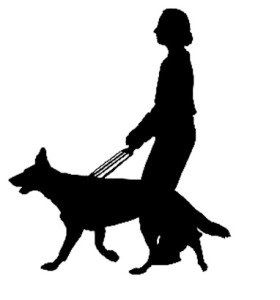 You see them every day, wearing those bright vests and standing next to their master, helping them, guiding them through life. Guide and service animals — which are not always dogs, by the way — are used to help their human companions live a fulfilling and vibrant life. And there are so many different ways that they can help. Here are a few of the different types of guide or service animals that you may come in contact with.
You see them every day, wearing those bright vests and standing next to their master, helping them, guiding them through life. Guide and service animals — which are not always dogs, by the way — are used to help their human companions live a fulfilling and vibrant life. And there are so many different ways that they can help. Here are a few of the different types of guide or service animals that you may come in contact with.
Guide Dogs for the Visually Impaired — One of the most iconic guide animals, these intelligent dogs help to guide their visually impaired human companions through the world around them. They use training, intelligent disobedience and a friendly and gentle personality to do just that.
Hearing Dogs — Also sometimes called “alert” dogs, these animals can be trained to alert a human companion who is hearing impaired to the sounds that most of us take for granted, such as an alarm, a telephone, their name being called in a crowded room. They have also been shown to help ease feelings of isolation and fear that can come with hearing loss.
Emotional Support Animals — As any pet owner knows, animals can provide emotional support in so many ways. Those service animals that are trained to promote and provide emotional support, however, do so in ways that go way beyond a simple nuzzle or lick on the hand. They provide non-judgmental support, a way to calm someone down and companionship. These types of service animals have been used with the elderly, autistic people or those suffering from PTSD.
Mobility Animals — These service animals, usually dogs, are trained to offer support and guidance to those who may have some mobility issues, such as being confined to a wheelchair, balance issues or problems with coordination. Human companions with cerebral palsy, MS, Parkinson’s and many other conditions can often benefit from having a well-trained mobility service animal.
Seizure Alert or Response Animals — These service animals, usually dogs, offer the ability for those human companions who live with various seizure conditions such as epilepsy to live a fuller, more rewarding life. They are trained to use their natural instincts to recognize when an episode is about to occur, and force their human companion to take the necessary precautions. This is done often by getting their attention through nuzzling, leaning against them or sometimes even climbing into their lap!
What types of service animals have you seen in your daily life? Do you use one? How have they made your life different? Comment below!

